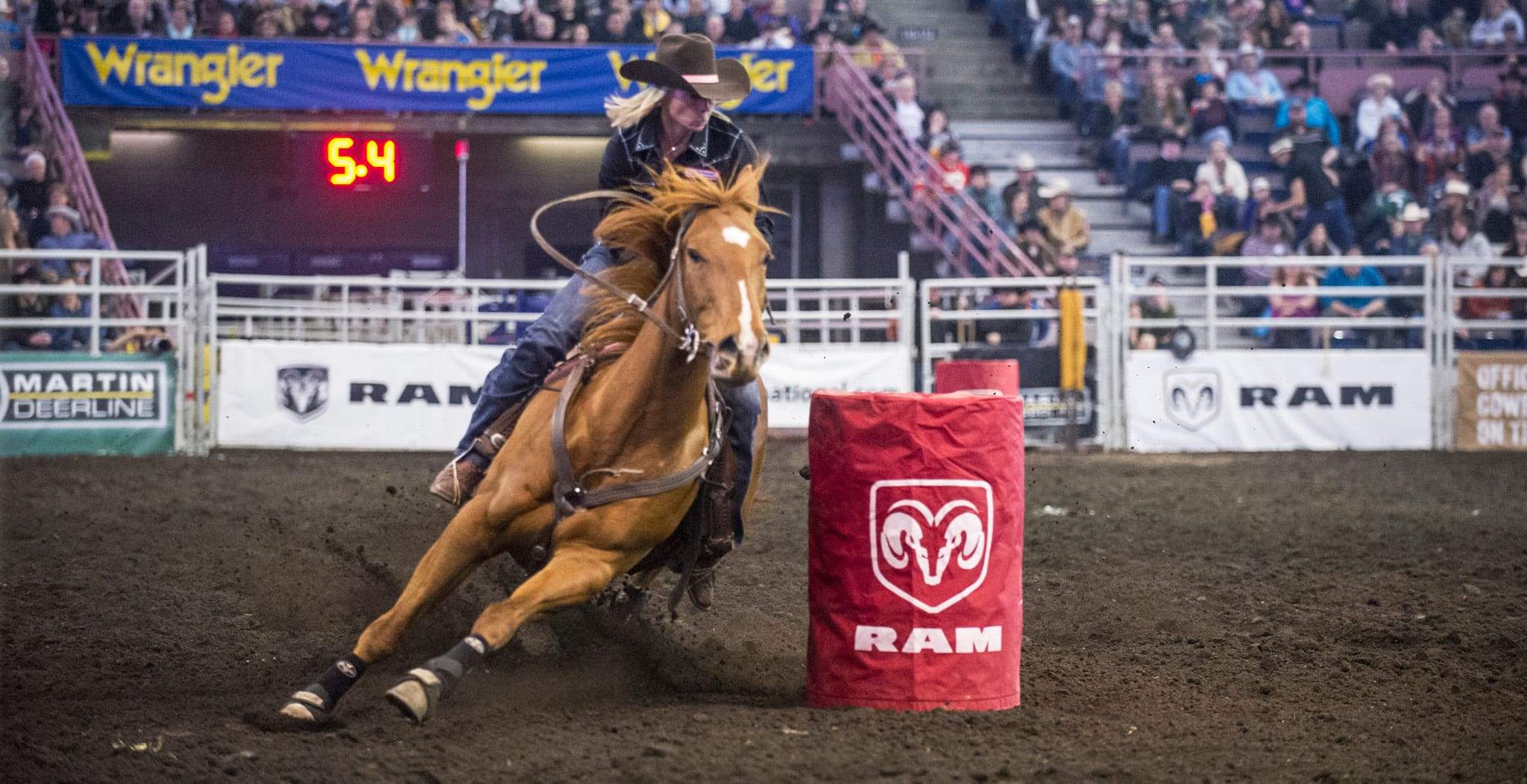What is Barrel Racing?
Barrel racing is a rodeo event in which a horse and rider attempt to complete a cloverleaf pattern around preset barrels in the fastest time. Though both boys and girls compete at the youth level, in collegiate and professional ranks, it is a rodeo event for women. It combines the horse's athletic ability and the horsemanship skills of a rider in order to safely and successfully manoeuvre a horse in a pattern around three barrels placed in a triangle in the centre of an arena.
Injuries often experienced in Barrel Racing horses
Watching barrel racing horses close up allows you to see the power and raw speed they have and how they subject their bodies to such tight and quick turns. Due to these high-speed movements the discipline experiences high levels of lameness in horses, most commonly resulting in forelimb lameness.
Research carried out in 2011 by the National Animal Health Monitoring System in the USA (NAHMS) indicated that nearly 50% of competing barrel horses could be performing with some degree of lameness, specifically relating to the fetlock joint.
In the study, several radiographic abnormalities associated in the forelimb fetlocks of high performing barrel horses were noticed:
– 70% of horses experienced inflammation of the sesamoid bones (Sesamoiditis).
– 56% of horses experienced inflammation or scarring of the synovial pad (Villonodular synovitis) on the front of the fetlock joint due to repeated trauma and extreme extension of the joint.
– 36% of horses experienced Osteoarthritis from a bone spur.
– 13% of horses experienced bone chips (Osteochondral fragments).
– 13% of horses experienced joint capsule inflammation (Capsulitis).
– 6.6% of horses experienced soft tissue swelling.
The majority of animals examined in this study were more likely to display external signs of lameness on the right forelimb than on the left-hand side. Radiographic evidence, however, showed more abnormalities of the left forelimb. This is thought to be caused by the extreme impact and hyperextension on the suspensory tendon apparatus whilst turning around barrels. Most horses make one right turn, which may cause soft tissue swelling, accounting for the external right forelimb lameness, and two left turns, explaining the higher incidence of sustained injury on the left forelimb.
It is reported by many barrel racing enthusiasts that prevention is as important as the cure; so many people competing in the fast-paced discipline of barrel racing are continuously searching for alternative products and solutions to support their barrel racing horse. Inflammation and soft tissue swelling, lameness, arthritic changes in the joints and so on are key factors in this search.
Commonly used treatments for barrel racing horses
Despite the high likelihood of injury associated with barrel racing horses, there are commonly found treatments available that can extend the longevity of a horse’s career including IRAP, Stem Cell, Platelet Rich Plasma, joint supplements, anti-inflammatory medications, corticosteroids, alternative therapy solutions (such as magnetic and thermal regulating technology) and shockwave therapy.
It is worth noting that many higher level competitions will not allow the use of medications within their competition rules or regulations. In today’s environment many look for a natural alternative.
Although the chances of your barrel horse sustaining some kind of performance reducing injury are high, most horses can continue to perform as high-level athletes. Proper hoof care and the use of support boots and wraps are also helpful in preventing excessive hyperextension and injury. It is also important for all sports horses to receive regular veterinary checkups helping to increase the possibility of early diagnosis of any soft tissue or joint injury and the odds of successful treatment and a speedy recovery.
While most horses with a tendon injury or ligament injury will be on stall rest (box rest) for at least a month and not return to full work for upwards of eight months to a year, the protocol can vary widely depending on the location and severity of the injury. Time is key, so looking to improve how the horses natural healing process works is of key significance.
In most cases, treatment can be a long and expensive process with a strong emphasis on recovery and rehabilitation. Many horse owners search for alternative therapies to support their barrel racing horses, with ‘prevention being as important as cure’.

